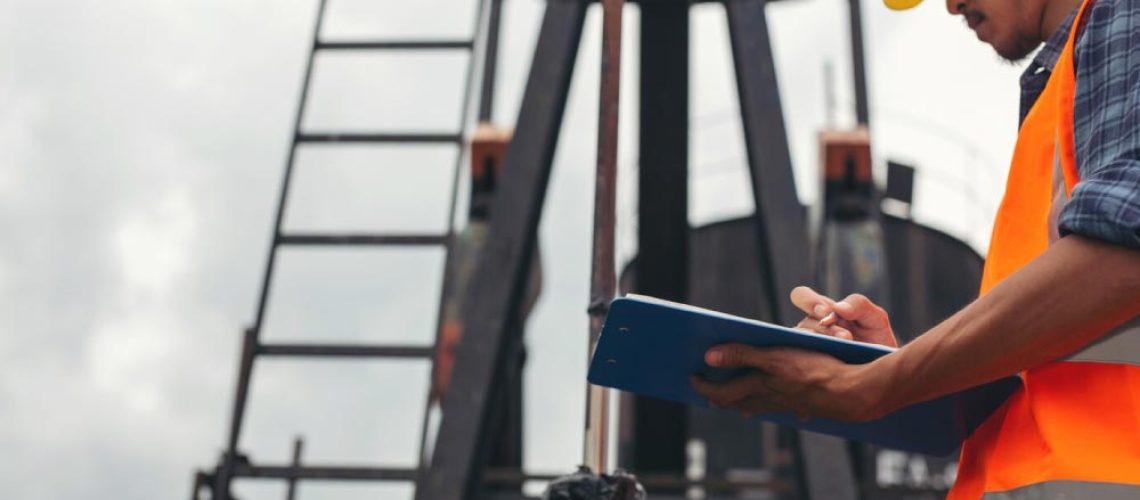In the world of the oil and gas industry, construction, and water drilling, proper drilling procedures play a crucial role in achieving optimal results while ensuring safety and operational efficiency. The drilling process not only involves advanced technology but also requires careful preparation and reliable team coordination.
Drilling is one of the techniques used to penetrate the ground, whether for oil and gas exploration or to obtain water sources. This technique has evolved along with technological advancements and is now supported by various innovations such as digital sensor systems, real-time data analysis, and high-capacity rigs. As a result, drilling procedures have become increasingly standardized and safe to implement in various field conditions.
Each step in the drilling process must be carried out carefully and meticulously. Even the smallest error in the preparation or execution phase can have a significant impact on work safety and operational costs. Therefore, a thorough understanding of each stage—from planning to evaluation—is crucial to ensure optimal results and minimize risks.
Preparation Before Drilling
Before starting the drilling process, there are several preparation stages that cannot be overlooked. This preparation involves location evaluation, field surveys, and selecting the appropriate equipment.
Location Evaluation and Geological Study
Location evaluation is a crucial initial step. A team of experts must conduct a geological study to understand the characteristics of the soil and rock in the drilling area. This information helps determine the optimal drilling depth and predict potential risks such as the presence of high-pressure gas or water.
Measurements and Field Survey
Field surveys are conducted to obtain accurate data on the topography and physical condition of the soil. These measurements involve digital mapping and the use of modern measuring instruments to ensure every detail of the location is well identified.
Equipment and Rig Preparation
The selection and preparation of drilling equipment are critical to a smooth process. The rig must be chosen based on the field specifications and the type of drilling to be performed. Additionally, equipment calibration must be carried out to ensure optimal performance during operations.
Step 1: Drilling Planning
The planning stage is the foundation for the success of the drilling process. At this stage, various analyses are conducted to determine the most efficient and safe drilling strategy.
Determining the Optimal Location
The selection of the drilling location must be based on accurate geological data as well as resource potential analysis. Factors such as the availability of infrastructure and site accessibility must also be considered to ensure the drilling process runs smoothly.
Analysis of Geological Conditions
Geological condition analysis involves assessing the soil and rock layers, as well as identifying potential risks. This data is collected from field surveys, test drilling, and computer modeling. The analysis results are used to design an optimal and safe drilling path.
Step 2: Rig and Equipment Installation
After planning is complete, the next stage is the installation of the rig and drilling equipment. This process must be carried out meticulously to ensure all equipment is functioning properly.
Choosing the Right Rig
The rig is the backbone of drilling operations. The selection of a rig must be adjusted according to the field characteristics, the depth to be reached, and the surrounding environmental conditions. Modern rigs are equipped with advanced technology that facilitates monitoring and control of the drilling process.
Installation and Calibration of Equipment
Once the rig is chosen, supporting equipment such as pumps, sensors, and control systems must be installed and calibrated. This calibration is aimed at ensuring measurement accuracy and operational stability so that the drilling process can be carried out with precision.
Step 3: Start Drilling
After all preparations are complete, the drilling operation can commence. At this stage, modern drilling techniques are applied with consideration for safety and efficiency.
Modern Drilling Techniques
Today, drilling uses various modern techniques such as rotary drilling and directional drilling. These techniques enable drilling to be carried out at high speeds and with high accuracy, even in areas with complex geological conditions.
Workplace Safety Aspects
Workplace safety is the top priority in every drilling operation. Operators must always wear personal protective equipment (PPE) and follow established safety procedures. In addition, the monitoring system must always be active to detect potential hazards early.
Step 4: Process Measurement and Monitoring
During the drilling process, continuous monitoring is required to ensure everything runs according to plan. Measurements and monitoring are conducted with the aid of digital technology and integrated sensor systems.
Monitoring Systems and Sensors
The use of digital sensors is very helpful in monitoring pressure, temperature, and drilling speed. The collected data enables the technical team to take immediate action if deviations from the set parameters occur.
Utilization of Digital Technology
Digital technologies such as the Internet of Things (IoT) and real-time monitoring systems allow for better control over the drilling process. With this technology, operators can monitor the condition of rigs and equipment remotely, improving responsiveness to potential issues.
Step 5: Process Control and Optimization
At this stage, the drilling team analyzes the data collected during the process and makes adjustments to optimize operational performance.
Drilling Data Analysis
The data obtained from sensors and monitoring systems are analyzed to identify areas in need of improvement. This analysis helps the team make data-driven decisions to improve efficiency and reduce operational downtime.
Adjustment of Operational Techniques
based on the analysis results, adjustments to drilling techniques are made to address any issues that arise. For example, if it is found that the drilling speed has decreased, operators can modify operational parameters or replace equipment that is not functioning optimally.
Step 6: Temporary Suspension of Drilling
It is not uncommon in drilling operations for there to be moments when the process must be temporarily halted to address technical issues or conduct in-depth evaluations.
Handling Technical Issues
During the temporary suspension, the technical team conducts a thorough inspection of the equipment and field conditions. Identifying issues such as rig damage or sensor data discrepancies is crucial so that corrective actions can be taken swiftly and accurately.
Temporary Evaluation and Repairs
A temporary evaluation is conducted to reassess operational conditions. If any gaps or potential risks are found, corrective measures are immediately implemented before resuming drilling. This process ensures that all issues have been addressed to avoid accidents in the field.
Step 7: Drilling Completion and Outcome Evaluation
The final stage of the drilling process is the completion of the work and evaluation of the drilling results. This process includes cleaning up the drilling site and analyzing the obtained outcomes.
Site Cleanup and Restoration
After drilling is completed, the area is cleared of leftover materials and equipment that are no longer needed. Site restoration also involves efforts to return the natural condition as optimally as possible in order to minimize environmental impact.
Outcome Analysis and Documentation
The drilling results are thoroughly analyzed to determine whether the operational targets have been achieved. Complete documentation of the process, challenges, and solutions taken is essential as a reference for future drilling projects.
Conclusion
A well-structured and meticulous drilling procedure is the key to the success of a drilling project. From the planning stage, rig installation, drilling execution, to outcome evaluation, each step plays an important role in ensuring safety, efficiency, and optimal results. By leveraging modern technology and data-driven approaches, the drilling process becomes not only faster and more accurate but also safer for the entire team involved.
Through this article, it is hoped that readers gain a comprehensive overview of the seven main steps in the drilling procedure, as well as the importance of each stage in achieving project success. May this information be beneficial and serve as a reference in field drilling practices.

